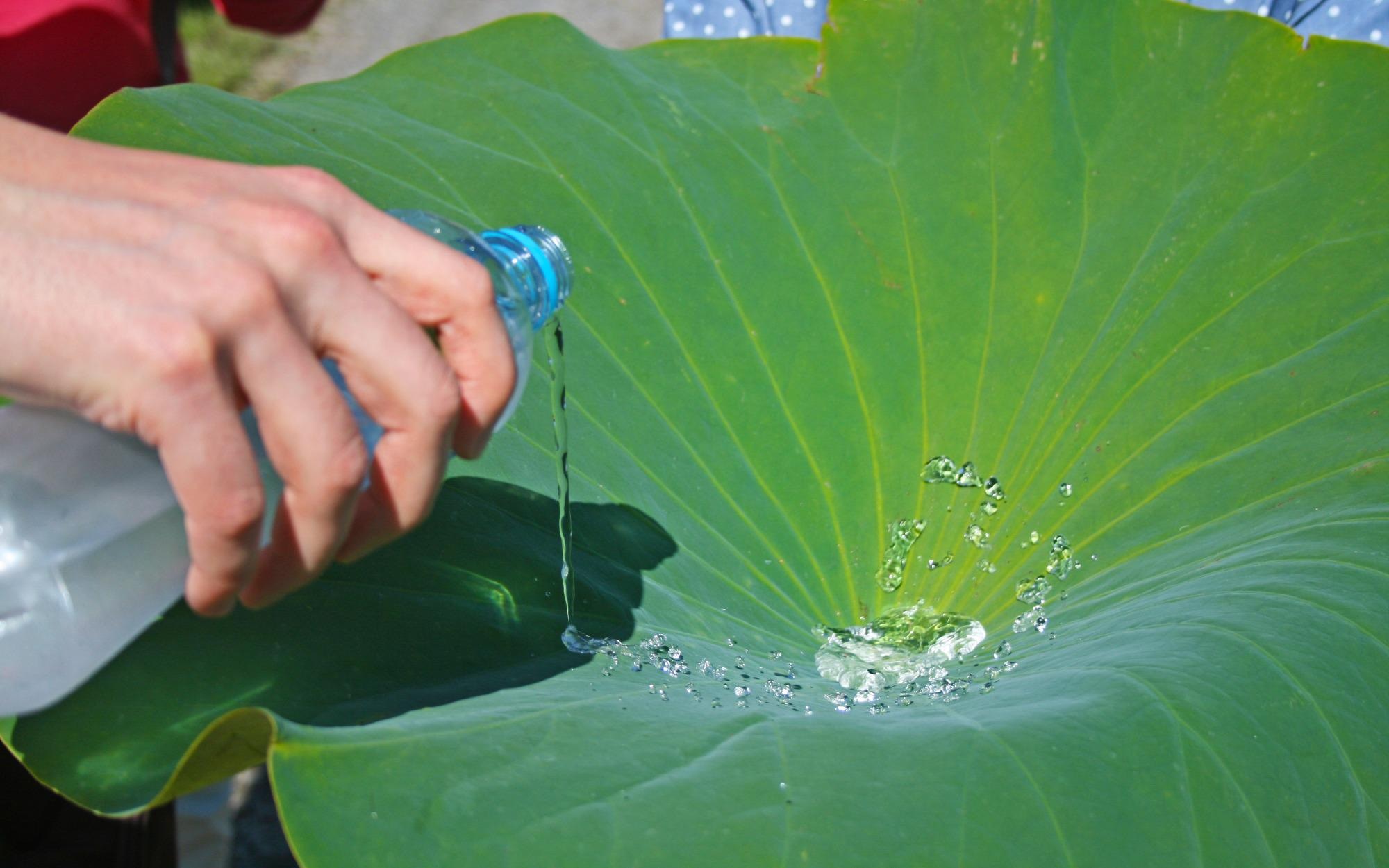Inspired by the always immaculate lotus leaf, researchers have developed a self-cleaning bioplastic that is sturdy, sustainable and compostable.
 The design of the self-cleaning bioplastic was inspired by the lotus leaf, which effortlessly repels water and dirt. Image Credit: RMIT University.
The design of the self-cleaning bioplastic was inspired by the lotus leaf, which effortlessly repels water and dirt. Image Credit: RMIT University.
The innovative plastic developed at RMIT University repels liquids and dirt – just like a lotus leaf – then breaks down rapidly once in soil.
RMIT PhD researcher Mehran Ghasemlou, lead author of the study published in Science of the Total Environment, said the new bioplastic was ideal for fresh food and takeaway packaging.
“Plastic waste is one of our biggest environmental challenges but the alternatives we develop need to be both eco-friendly and cost-effective, to have a chance of widespread use,” Ghasemlou said.
“We designed this new bioplastic with large-scale fabrication in mind, ensuring it was simple to make and could easily be integrated with industrial manufacturing processes.”
Ghasemlou said nature was full of ingeniously-designed structures that could inspire researchers striving to develop new high-performance and multifunctional materials.
“We’ve replicated the phenomenally water-repellent structure of lotus leaves to deliver a unique type of bioplastic that precisely combines both strength and degradability,” he said.
The bioplastic is made from cheap and widely-available raw materials – starch and cellulose – to keep production costs low and support rapid biodegradability.
The fabrication process does not require heating or complicated equipment and would be simple to upscale to a roll-to-roll production line, Ghasemlou said.
Naturally Compostable
While biodegradable plastics are a growing market, not all bioplastics are equal. Most biodegradable or compostable plastics require industrial processes and high temperatures to break them down.
The new bioplastic does not need industrial intervention to biodegrade, with trials showing it breaks down naturally and quickly in soil.
“There are big differences between plant-based materials – just because something is made from green ingredients doesn’t mean it will easily degrade,” Ghasemlou said.
“We carefully selected our raw materials for compostability and this is reflected in the results from our soil studies, where we can see our bioplastic rapidly breaks down simply with exposure to the bacteria and bugs in soil.
“Our ultimate aim is to deliver packaging that could be added to your backyard compost or thrown into a green bin alongside other organic waste, so that food waste can be composted together with the container it came in, to help prevent food contamination of recycling.”
Lotus-inspired Structures
Lotus leaves are renowned for having some of the most water-repellent surfaces on earth and are almost impossible to get dirty.
The secret lies in the leaf’s surface structure, which is composed of tiny pillars topped with a waxy layer.
Any water that lands on the leaf remains a droplet, simply rolling off with the help of gravity or wind. The droplets sweep up dirt as they slide down, keeping the leaf clean.
To make their lotus-inspired material, the RMIT team of science and engineering researchers first synthetically engineered a plastic made of starch and cellulosic nanoparticles.
The surface of this bioplastic was imprinted with a pattern that mimics the structure of lotus leaves, then coated with a protective layer of PDMS, a silicon-based organic polymer.
Tests show the bioplastic not only repels liquids and dirt effectively, but also retains its self-cleaning properties after being scratched with abrasives and exposed to heat, acid and ethanol.
Corresponding author, Professor Benu Adhikari, said the design overcomes key challenges of starch-based materials.
“Starch is one of the most promising and versatile natural polymers, but it is relatively fragile and highly susceptible to moisture,” Adhikari said.
“Through our bio-inspired engineering that mimics the ‘lotus effect’, we have delivered a highly-effective starch-based biodegradable plastic.”
Ghasemlou is currently working with a bioplastic company, which is evaluating further development of these novel water repellant materials. The RMIT research team is keen to collaborate with other potential partners on commercial applications for the bioplastic.
‘Biodegradation of novel bioplastics made of starch, polyhydroxyurethanes and cellulose nanocrystals in soil environment’, with RMIT co-authors Associate Professor Fugen Daver, Billy Murdoch, Distinguished Professor Andy Ball and Distinguished Professor Elena Ivanova, is published in Science of the Total Environment (DOI: 10.1016/j.scitotenv.2021.152684).
A study describing the lotus leaf-inspired structure of the bioplastic was published in ACS Applied Materials and Interfaces (DOI: 10.1021/acsami.1c09959).
A lotus-inspired bioplastic that’s sustainable and compostable | RMIT University
Video Credit: RMIT University